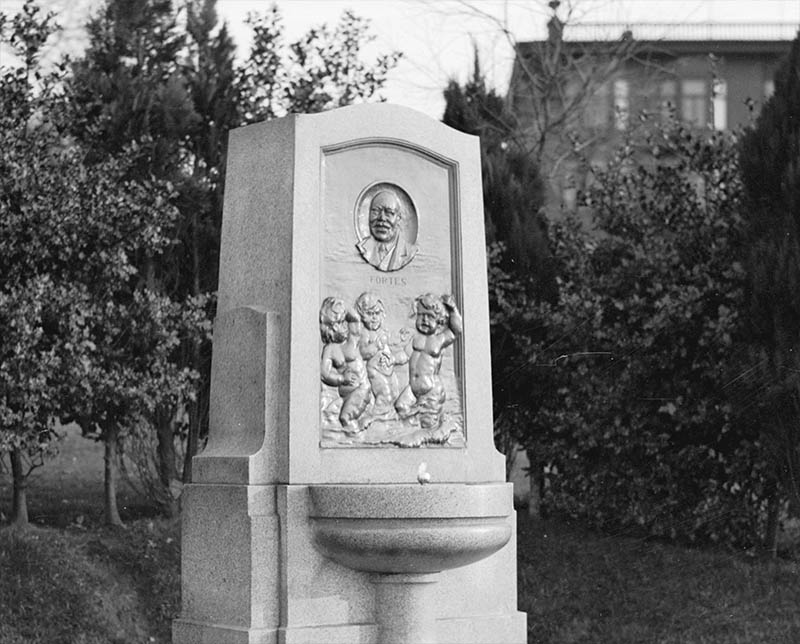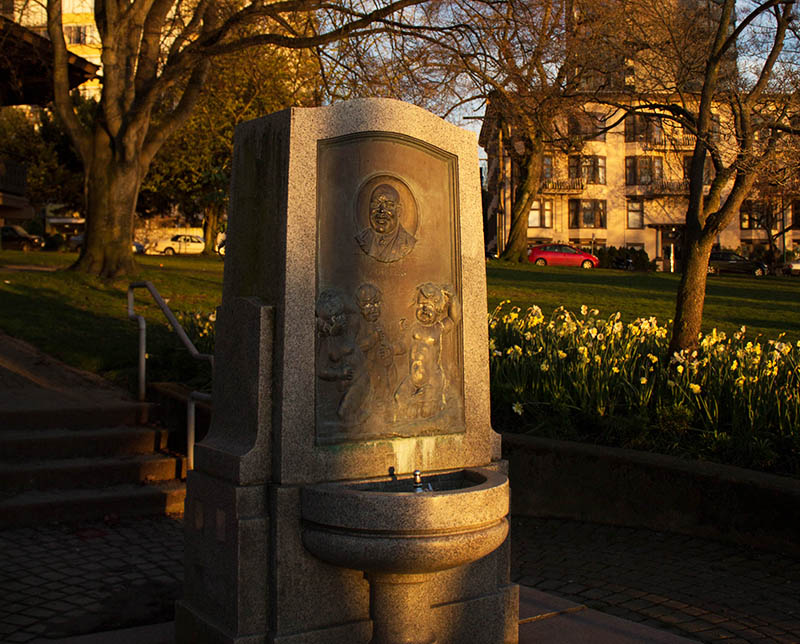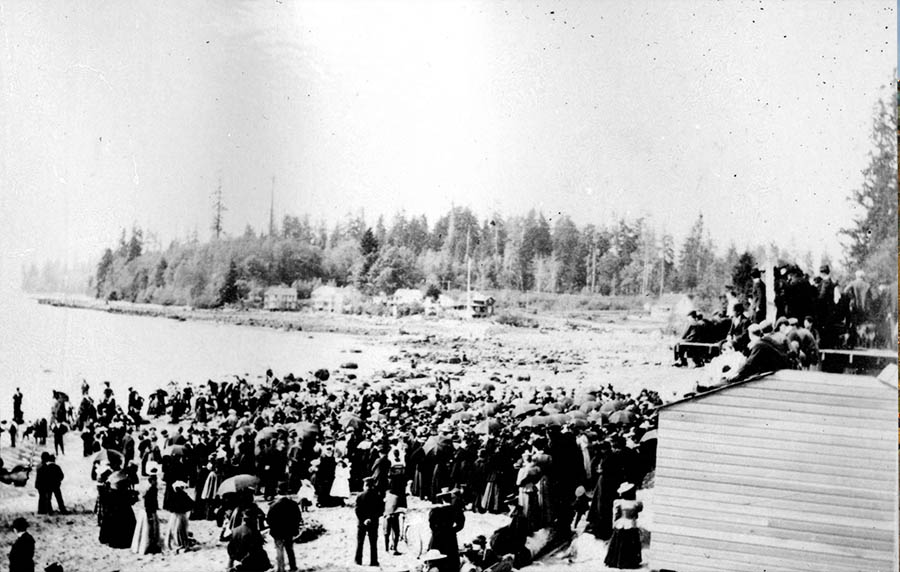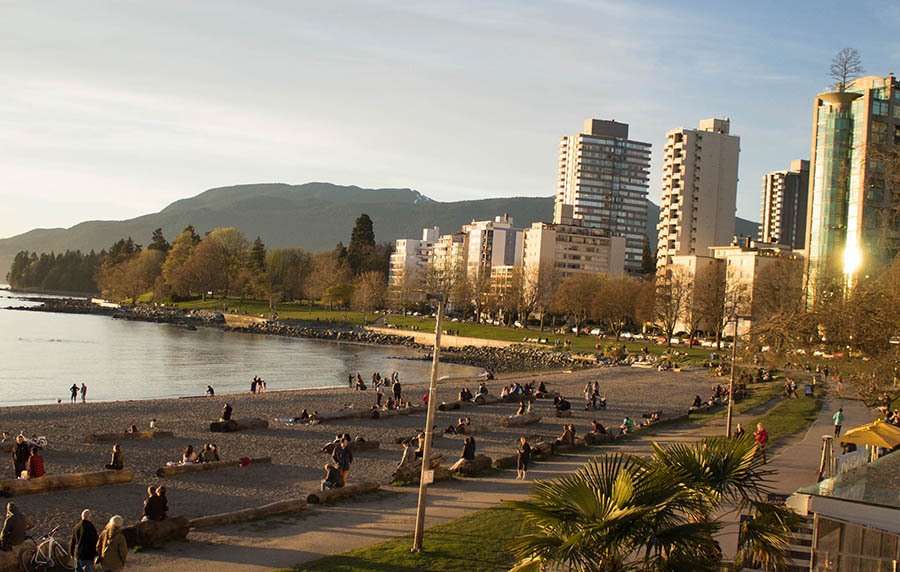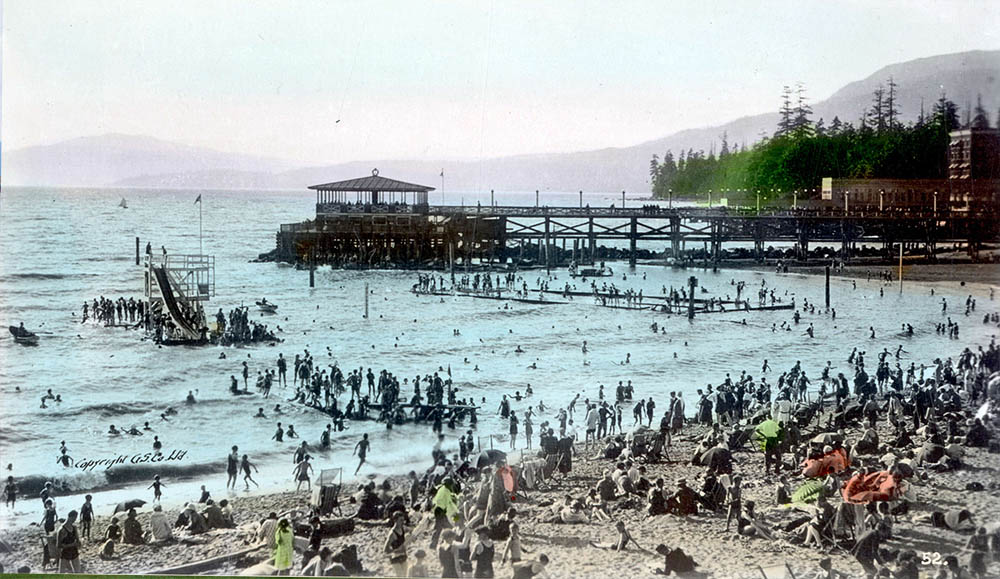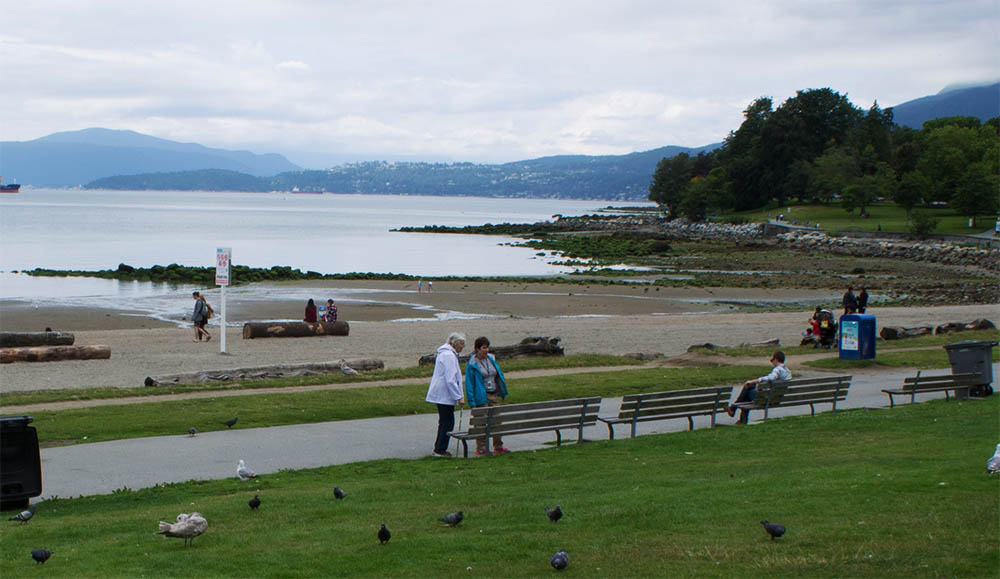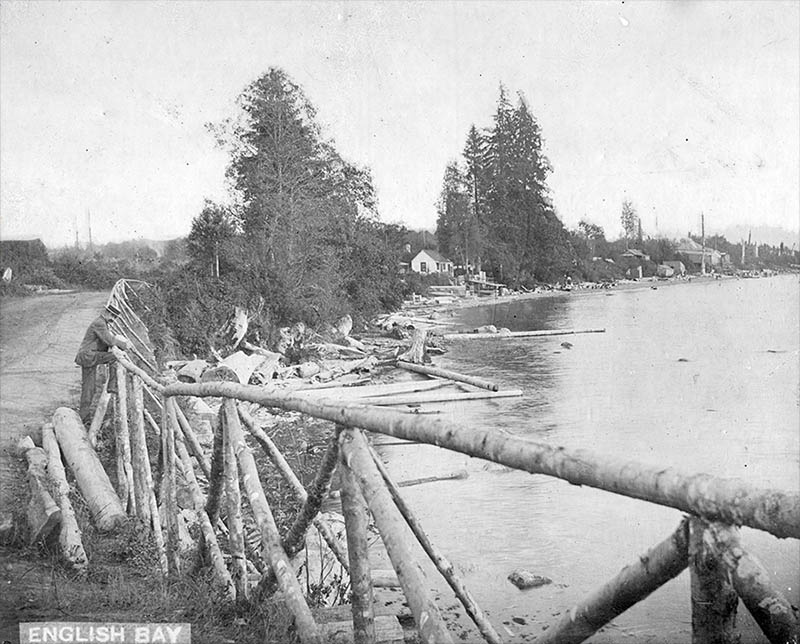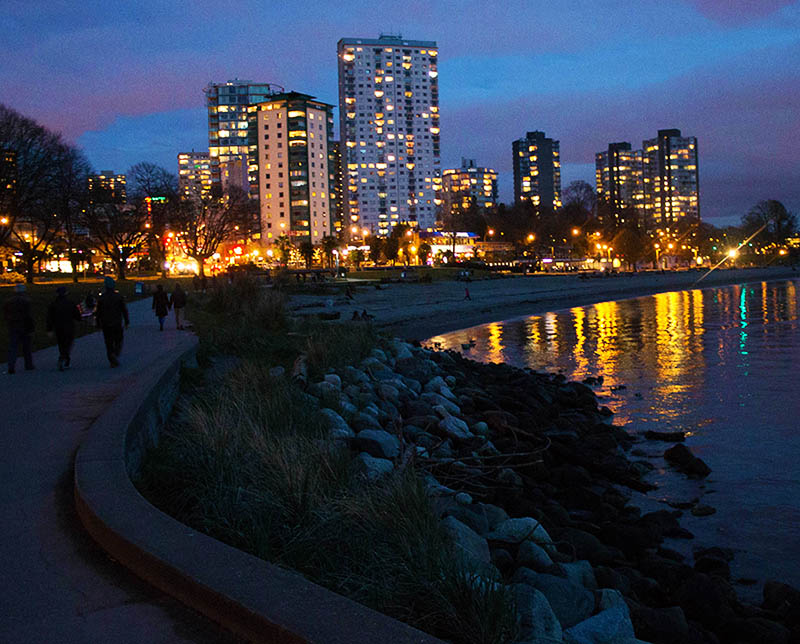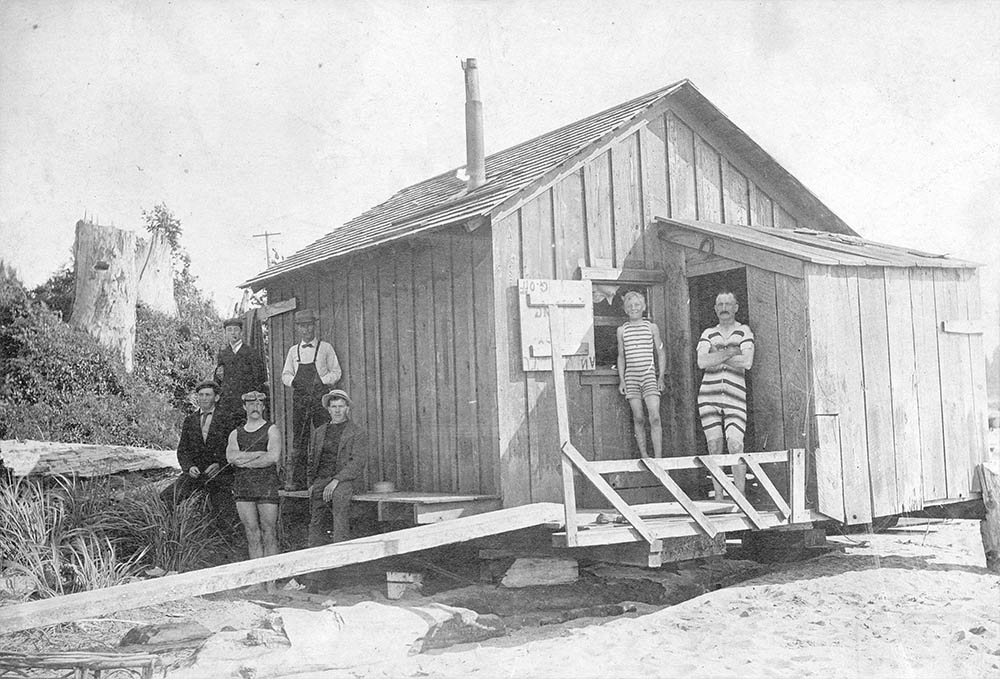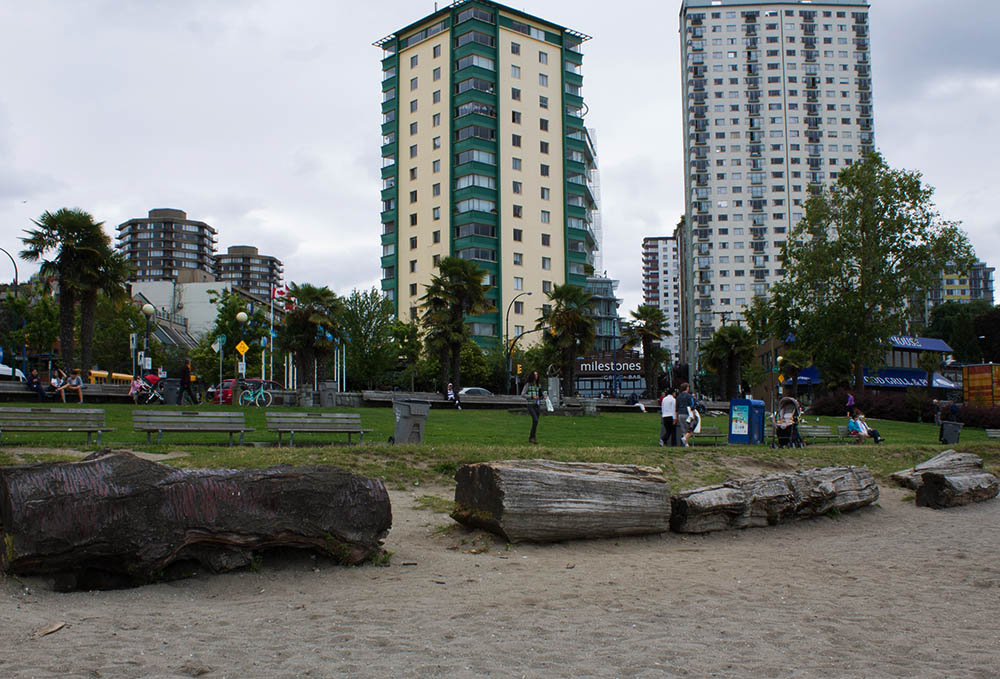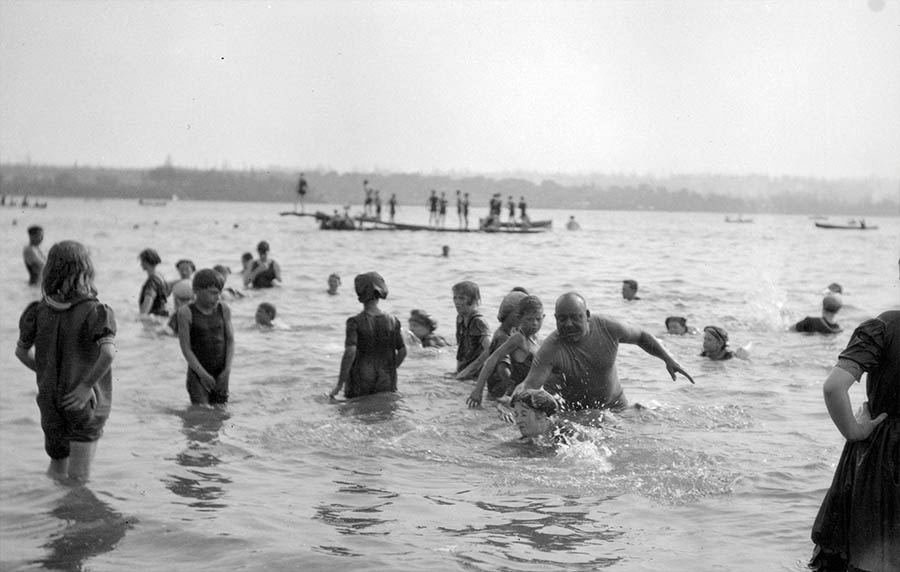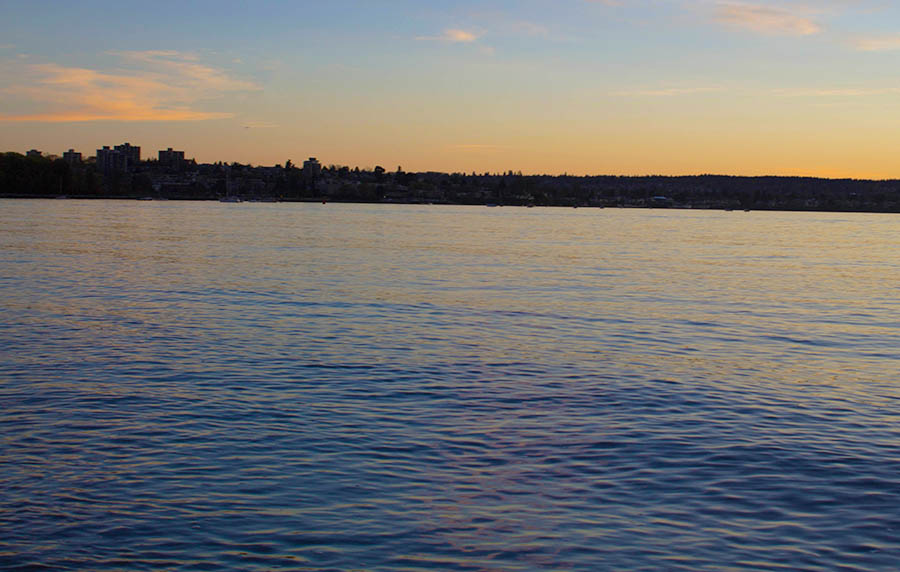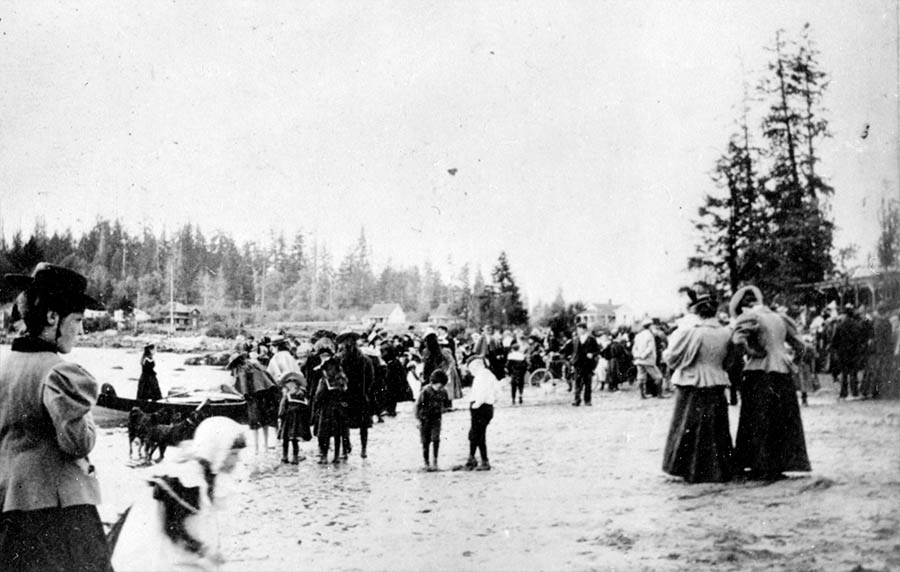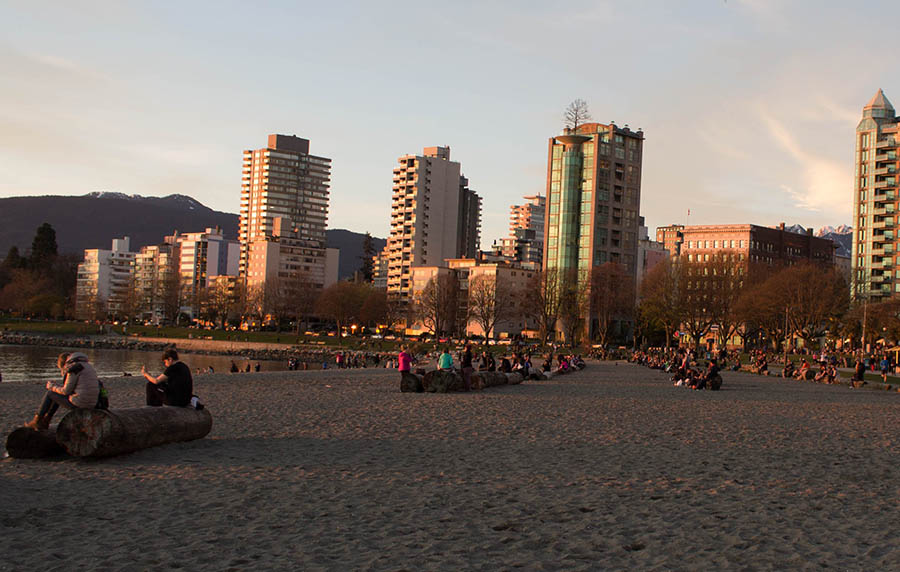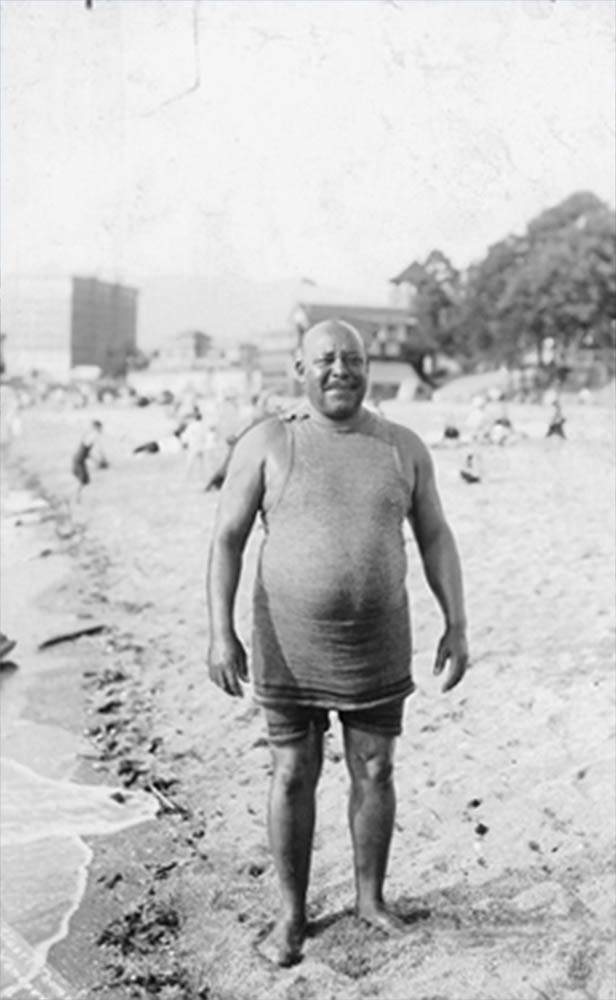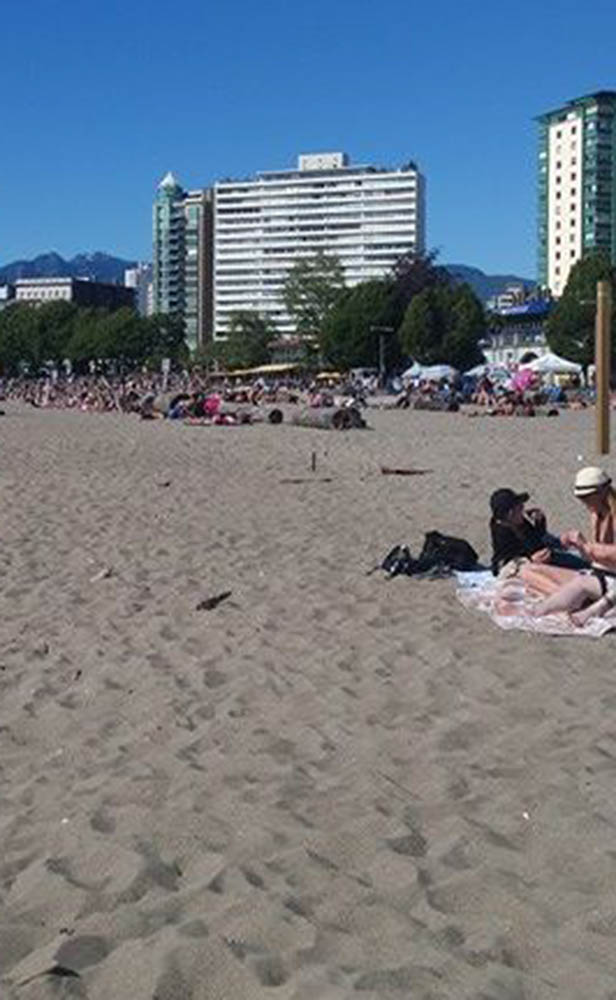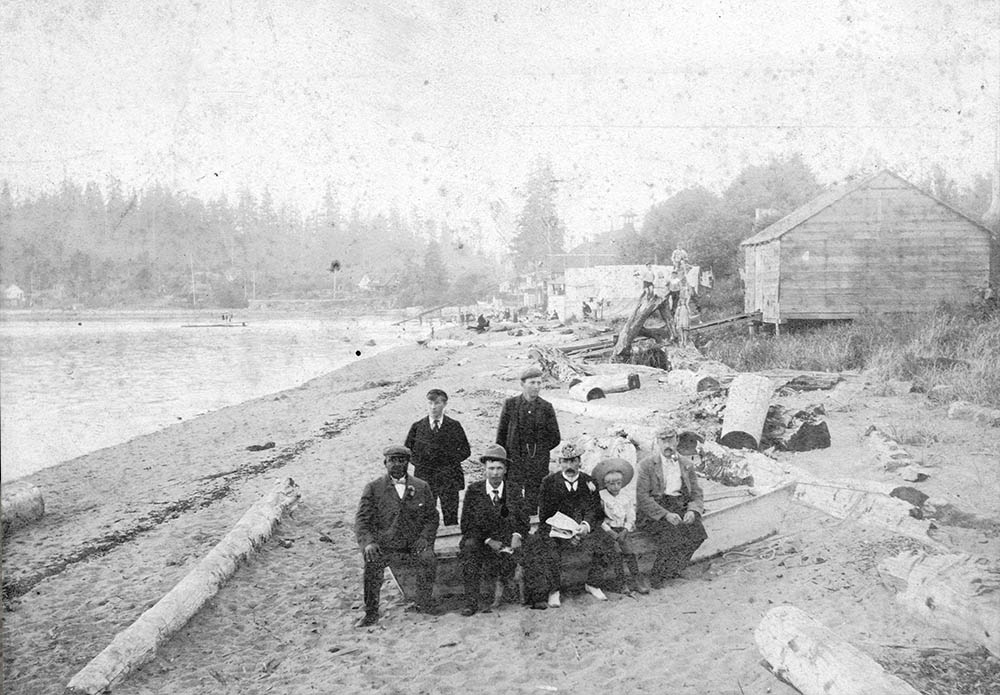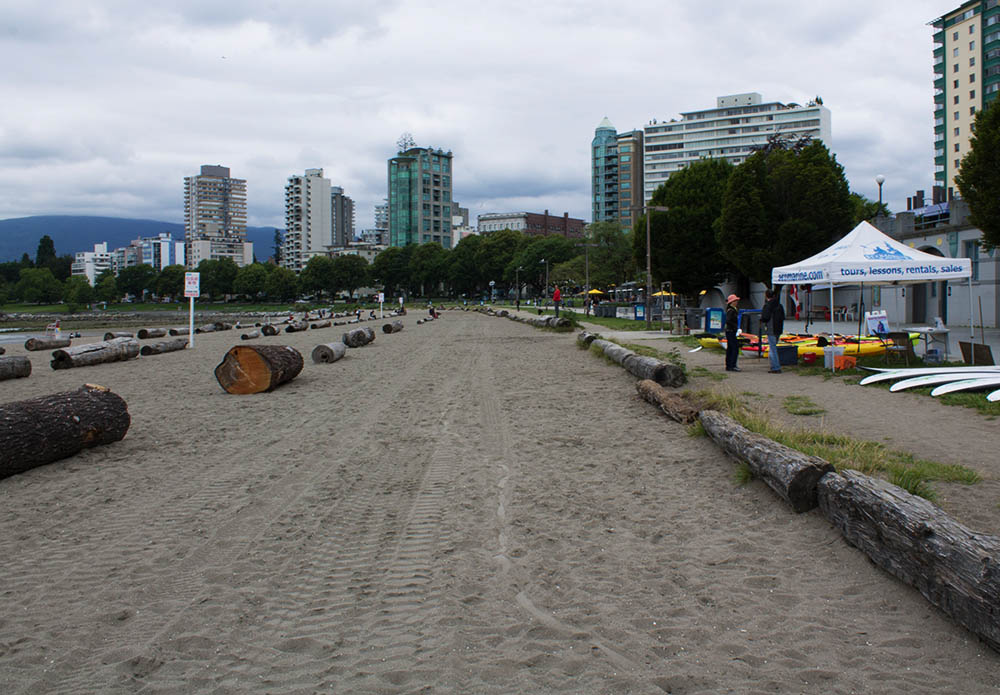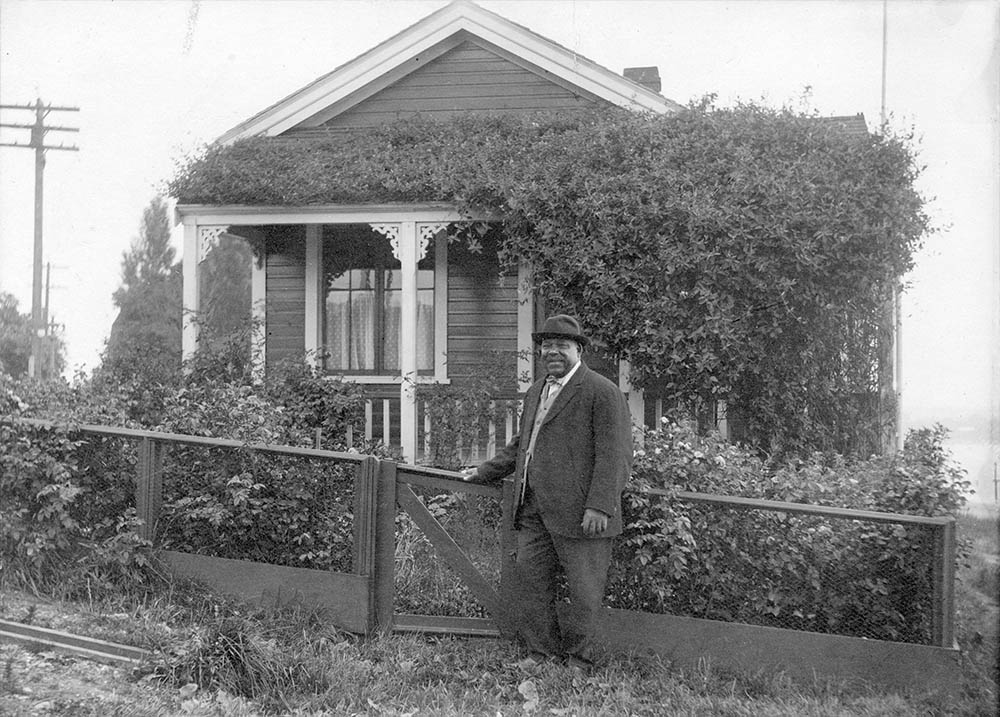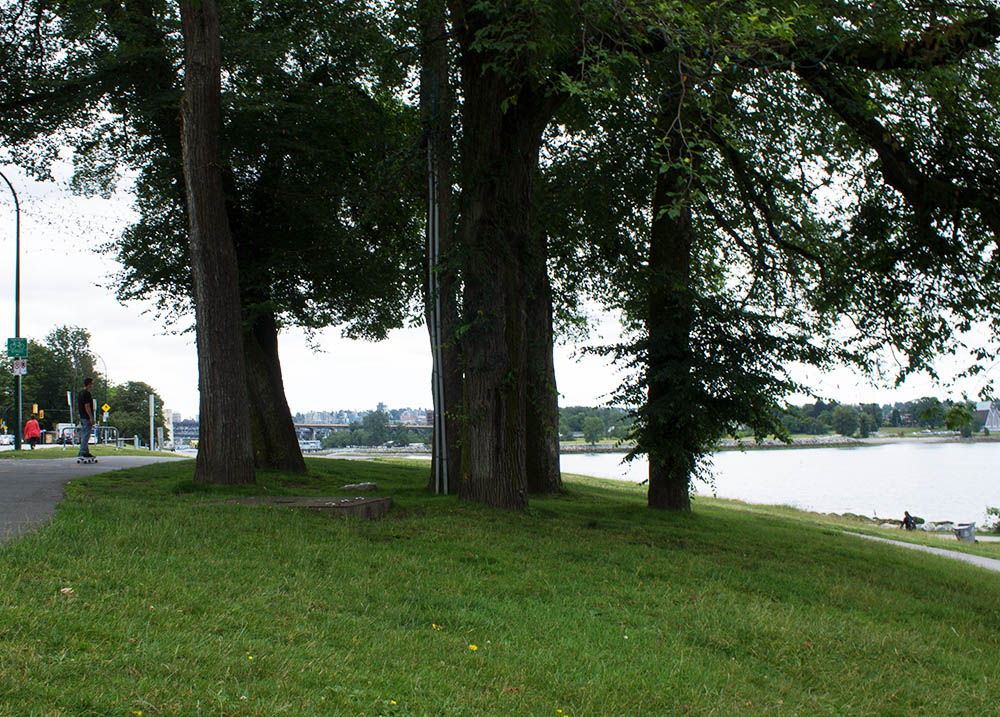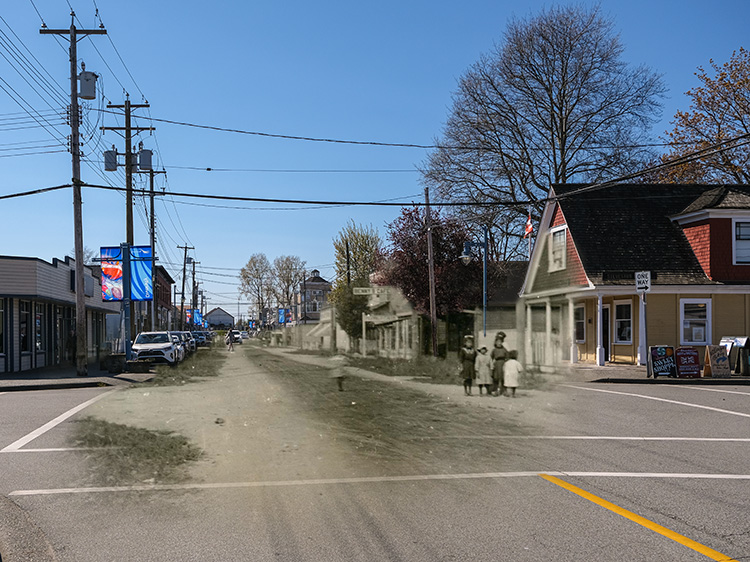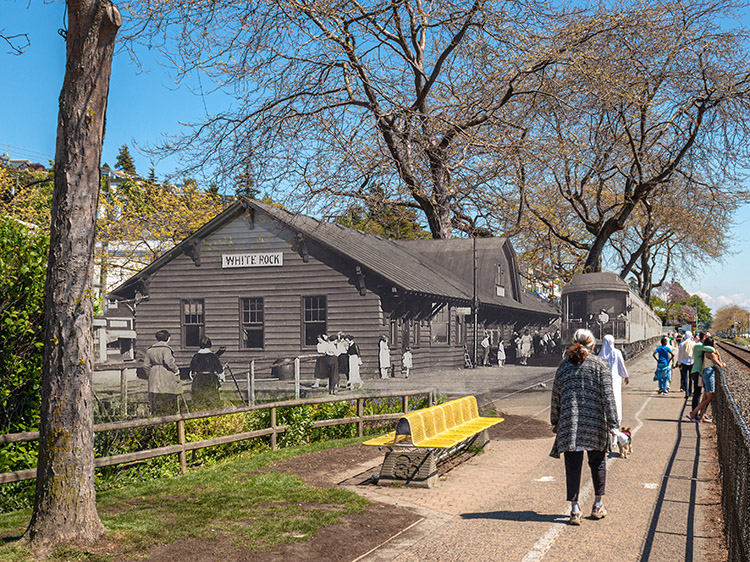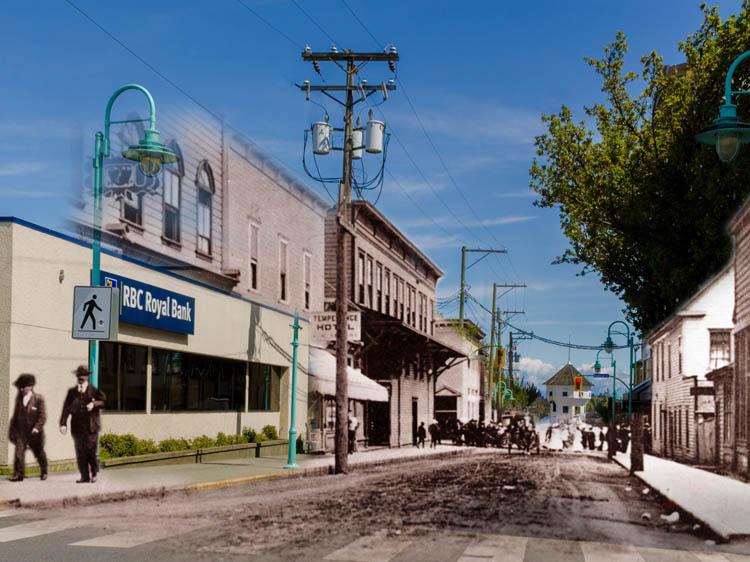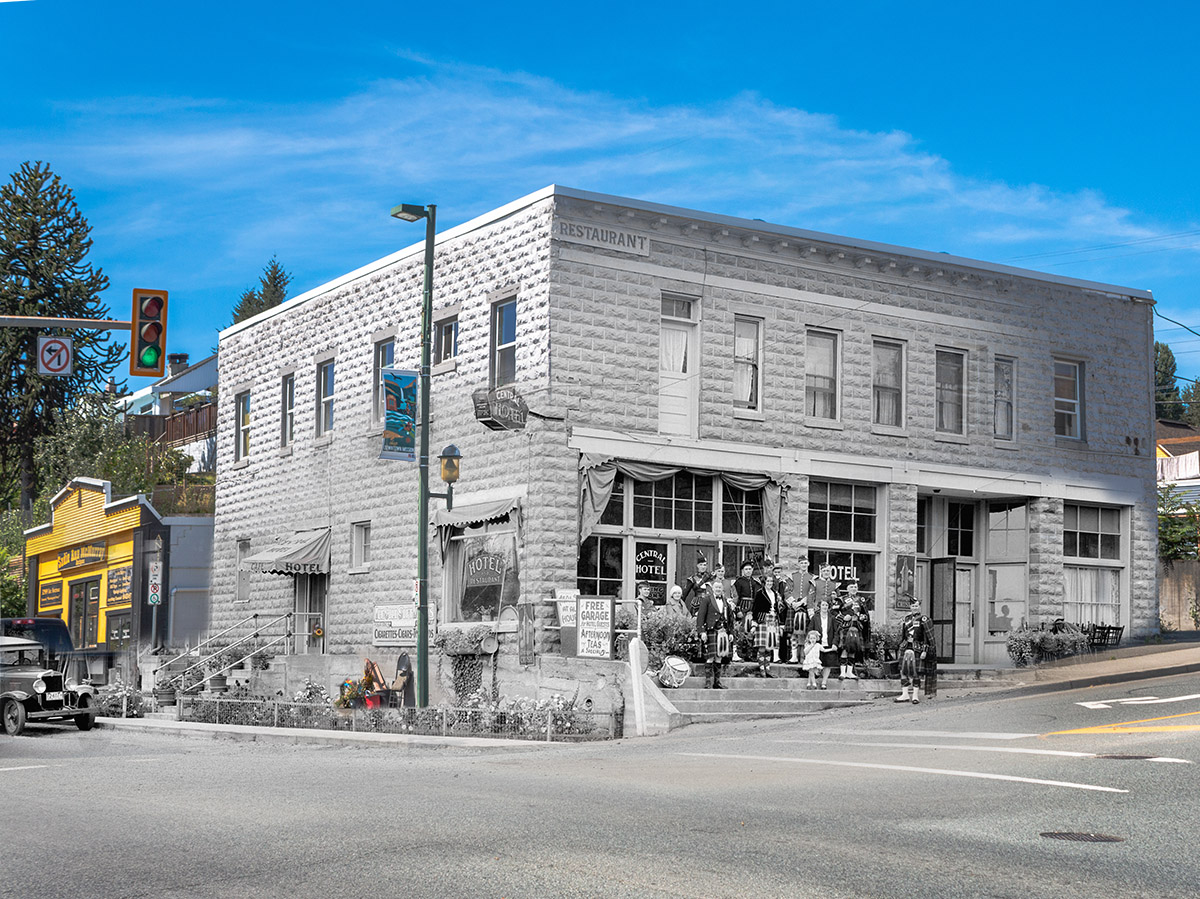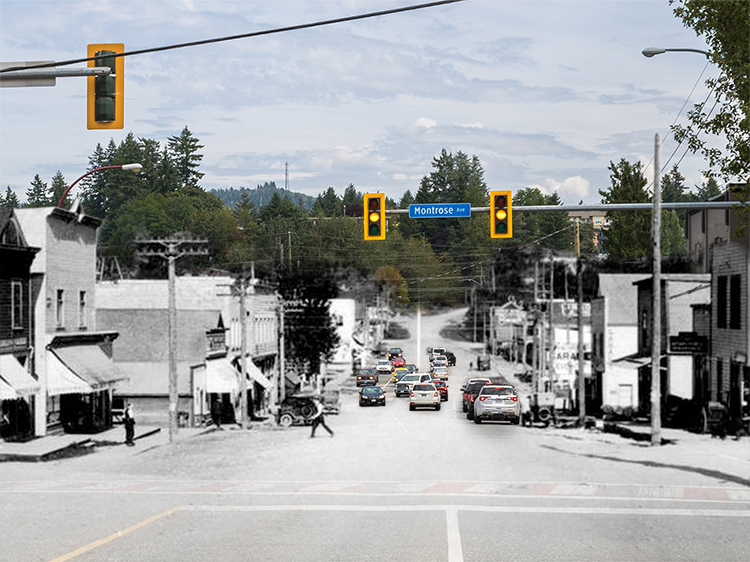Walking Tour
The Lifeguard Joe Fortes
Vancouver's Unlikely Hero
Andrew Farris
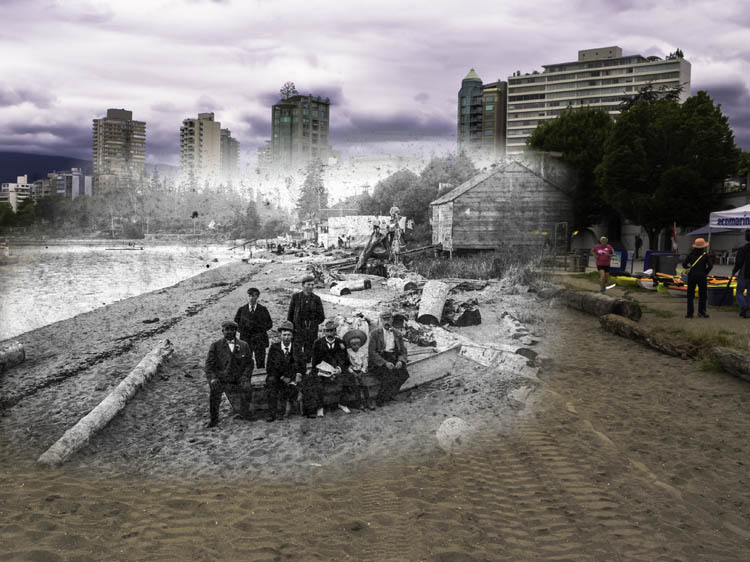
Vancouver Archives AM1376-: CVA 1376-227
On Vancouver's 100th birthday in 1986 the Vancouver Historical Society convened to select the "Citizen of the Century." There was no shortage of great pioneers and politicians, innovators and reformers to choose from. Yet when the committee settled on a black, half-literate lifeguard from the Caribbean it came as a surprise to few. Seraphim "Joe" Fortes was the unlikeliest of heroes, yet his story symbolizes Vancouver at its best . "Joe", the gentle giant, embodied the values of service, kindness and modesty that we hold in such high regard.
In this tour we'll recount "Joe's" moving story and how he captured the heart of three generations of Vancouverites. We'll be using excerpts from Barbara Rogers' and Lisa Anne Smith's wonderful book Our Friend Joe.
This project is a partnership with the Downtown Vancouver Business Improvement Association.
1. Joe's Fountain
Vancouver Archives AM1535-: CVA 99-2684
1932
The simple inscription on this memorial water fountain to Seraphim Fortes, universally known by his nickname Joe, reads "Children loved him." People of all ages raised $5,000 to build this monument. For 1887 to 1921 Joe was a constant fixture at the beach behind you, teaching children to swim, saving the lives of those who floundered and keeping the peace. It's no stretch to say that everybody in the young city knew him and loved him.
* * *
Joe soon made himself at home in Liverpool, the "New York of Europe", and found work as an attendant at the public baths, giving him plenty of opportunities to perfect his swim stroke. It may seem odd to us now, but for centuries swimming had been viewed with suspicion, the ocean a conduit for infectious disease. Few people ever learned how to do it. It was only around this time in the late 1800s that swimming was beginning to gain social acceptance, though the only strokes known were an awkward kind of breast stroke and a clumsy side stroke.
2. Learning to Swim
Vancouver Archives AM54-S4-: Be P65.1
1898
People listen to a sermon on the beach. Upon his arrival in Vancouver, Joe's impressive swimming skills stood out and made him an instant hit with a public keen to get in on the new sport.
* * *
Two other men dared to enter the race, and at midnight the three waded into the chilly waters and began their awkward 19th Century breast strokes against the swiftly flowing currents. A police constable had spotted them trespassing on private property and had hopped in a rowboat in hot pursuit. Soon one of the two men fell behind and was apprehended by the furious policeman. Joe and the second man kept going, leaving the constable's boat behind and approaching the other side. At long last, Joe clambered up the rocks on the far bank, victorious. Turning around, he saw his competitor floundering in the river. Joe, in what was to become his signature move, leapt back in the water and pulled the grateful man to safety.
Back at Daredevil Club headquarters Joe was acclaimed a hero and awarded the prize money (minus the steep fine incurred by the unfortunate third man). Yet it would not be long before Joe would become restless again, and in 1884 signed on as a crewman on the aging bark Robert Kerr before it made the circuitous voyage to Burrard's Inlet.
3. Coming to Vancouver
Vancouver Archives AM54-S4-: Be P73.2
1930s
This postcard view of English Bay shows the pier that no longer exists today, though at low tide you can see the rocks that supported it. In 1885 Joe arrived in Granville, which would shortly be renamed Vancouver. Only months later, in June 1886, he was there when the Great Fire ripped through the young city. The lives he saved that day began the Joe Fortes legend on this side of the Atlantic.
* * *
Joe quickly got a job as a shoeblack at the Sunnyside Hotel. These were exciting times: In April 1886 the rowdy sawmill town of Granville was incorporated and Vancouver was born. Then only a couple months later it completely burned down. As the fire swept through the town's Joe found the wife and eight-year-old son of a local Member of Parliament in one of the hotel's rooms and ushered them outside and into a boat, the flames licking at their heels.
The heroic act of saving the family of a Member of Parliament won Joe some powerful friends. As the city rebuilt he climbed a few rungs up the social ladder and found work as a bartender at the Bodega Saloon on 21 Carrall Street. His magnetic personality and easy-going attitude quickly made him one of the most popular people in the city. How else to explain this 1888 news report in the Daily News-Advertiser?
"A gloom seemed to pervade the city yesterday, especially that part lying around Carrall Street. Men went about with a sad look on their faces, dogs wore a dejected air, and even the rats seemed to feel the general depression. The cause of the universal sadness was the fact that Mr. Joseph Fortz, alias Joe, the popular bartender of the Bodega Saloon, was suffering from indisposition. He looked quite pale as he sat in a chair thoughtfully placed for him in Tattersall's stables and mused on the mutability of human affairs. All the leading physicians were in attendance and hourly bulletins were issued. Up to the time of writing, Joe, although not quite himself, was in a fair way of recovery and probably by this time as light-hearted as ever."
4. Joe's Discovery
Vancouver Archives AM54-S4-1---: S-5-15
1896
An early glimpse of English Bay at high tide. A few people have already built cottages here, but the beach Joe Fortes will have seen when he first rowed by in 1887 would not have been too different. Joe certainly deserves the credit for first realizing the potential of this magnificent place as the city's top destination for recreation and relaxation.
* * *
Joe excitedly rowed back to Vancouver and told his friends. They soon returned and claimed the beach as their own. The Squamish people of course had long been visiting this place and called it "Eeyulshun" or "good footing". They had left a rough trail through the densely forested West End which Joe and his friends discovered.
Word quickly spread around Vancouver of the legendary swimming beach, and soon all sorts of people, young and old, rich and poor, were making the trek out to English Bay. Joe, still in his 20s felt a certain responsibility for ‘his' beach and started acting as unofficial lifeguard in the summers. For many this was their first chance to learn to swim, and Joe proved a patient and friendly teacher.
5. Saving Lives
Vancouver Archives AM1376-: CVA 1376-228
1900
An early cabin built in English Bay for summer visits. Within a couple years of Joe's discovery, legions of Vancouverites were making the trek out to English Bay, and Joe successfully lobbied for a road of sorts to be built. Prudish Victorian-era sensibilities still prevailed and Joe divided the beach into men's and women's sections. As you can see, even men's swimsuits of this time left more to the imagination.
* * *
Many people still struggled with swimming (there weren't any pools to practice in) ensuring Joe was kept busy with teaching and saving lives. Soon this beach became unofficially known as "Joe's Beach." On one occasion in 1898 the American consul for Dawson City, J. McCook, stopped over in Vancouver on his way up to the Yukon and went swimming here. As reported in the Victoria Daily Colonist, he "was overcome with heart failure while bathing in English Bay and rescued from certain death by a coloured man named Joe Fortes, after he had disappeared for the third time."
All the Vancouver newspapers, particularly the Daily Province, breathlessly recounted Joe's frequent life-saving exploits and lauded his bravery. One report tells of how Joe hopped in his little rowboat during a fierce storm and rowed way out to Point Grey to save the crew of a sinking sailboat. Stories like this could not help but make Joe into a public hero. Officially he is credited with saving 29 lives but the actual number is thought to be well over 100.
6. Official Lifeguard
Vancouver Archives AM1584-: CVA 7-167
1912
Here is Joe Fortes. Surrounded by children, he's teaching a girl to swim who does not appear to be taking to it. Vancouver was still a small, tight-knit community in the late 1800s, so pretty much everyone had been taught to swim by Joe. After over a decade of watching over the beach in his spare time the people of Vancouver decided Joe deserved some compensation, and he was given an official position.
* * *
In 1900 a petition was circulated demanding Joe be instated as lifeguard with an official title and salary. When it was presented to City Council it had garnered thousands of signatures. Council immediately agreed, appointing Joe swimming instructor, lifeguard and special constable of English Bay with a salary of $80.00 a month, a not insignificant sum at the time. Characteristically, the mayor and councillors came down to the beach and had to call Joe out of the water to tell him the good news.
A report in the Daily Province soon followed that dispelled any doubts about the decision. "Joe Fortes, lately appointed swimming instructor at English Bay by order of the city council, has already earned his salary."2 He'd saved the life of a five-year-old who'd wandered out into the water and had been submerged for some time before Joe got to him.
7. Joe's Modest Life
Vancouver Archives AM54-S4-: Be P64.5
1898
Crowds have turned out in their Sunday best for a baptism in English Bay. Joe may have been present that day as he was a very pious man, who sat every Sunday in his favourite spot on a pew in Holy Rosary Cathedral. His undeniable virtues impressed many people in a time tainted with racial prejudice, especially the scandalous taboo of a "negro" touching white women and children. On hot summer days when children would run off to the beach their parents shouted after them "and don't go away from where Joe is!" knowing they were in safe hands.1
* * *
All through this time his beach was evolving around him. The trees in the West End had come down and neighbourhoods had sprung up. A pier was built, as were two bathhouses. The one that survives today was built in 1932. All those old cottages along the tree-line were relocated too as the city sought to widen public access to the beach. One modest cottage was relocated further north to the end of the beach, and this one was given to Joe to live in. It was his home until his death.
8. Fighting for Joe
Vancouver Archives AM336-S3-2-: CVA 677-440
1905
Here is Joe at about age 40. Curiously, Joe seems to be smiling in all his photos, which was unusual at the time. When a cost-cutting mayor tried to have Joe dismissed, the city rallied around him, forcing the politician to back down. A couple years later he was overcome with grief when two girls drowned near his beach. In response the Vancouver Athletic Swimming Club honoured him in a touching scene.
* * *
When it was realized this would lead to Joe's dismissal, the people of Vancouver were incensed. A new petition demanding Joe's position be made permanent was rapidly circulated and presented to council. All of Vancouver's most prominent citizens had signed it, as well as 2,000 others representing a broad cross-section of society. Stunned by this rebuke the Mayor withdrew his plans.
Joe could not watch over everyone on the beach all the time however. In 1908 two girls swimming to the west of Joe's Beach, by Stanley Park, were snagged by rocks, held underwater and drowned. Joe, probably unjustifiably, held himself responsible. A reporter who interviewed him described his grief as "shattering to behold."
The members of the Vancouver Athletic Swimming Club, who had all been taught to swim by Joe, could not bear to see the gentle giant in such a state. They decided to mint a personalized gold medal for Joe to thank him for all the lives he had saved. As the swim team marched to Joe's cottage to present the medal, word spread around town and soon a giant crowd had formed outside his humble home.
Joe emerged from his house, shocked by the cheering throngs. When presented with the medal he fought back tears and managed to say "I've always tried to do my best at the bay, and shall try to keep that reputation."1
9. Vancouver's Hero
Vancouver Archives AM1376-: CVA 1376-227
1890s
Here is Joe is sitting at left, along with some friends. He left an indelible mark on the children of Vancouver in these decades. The boy in the photo above may have been one of those he taught to swim who went off to war in 1914, as did many of his former pupils. Joe, too old to fight at this point, stayed behind and became a sort of father-figure for the kids.
* * *
Joe stood up and said his aim in life had always been "not to make myself a big man, but only for the benefit of the little ones, to whom my heart is attached and always will be."1
As war enveloped the world Joe bid farewell to many of his old friends who rushed to enlist. Many of them would never return. For the grief-stricken children they left behind there was some solace in Joe's reassuring presence, his broad smile and booming voice always to be found on that beach.
10. Joe's Legacy
Vancouver Archives AM54-S4-: Bu P111
1910s
This is Joe's little cottage. As the last of the English Bay cottages, after his death in 1922 it was demolished and this stand of trees planted in its place. He was gone, but his memory lives on.
* * *
Vancouver went into mourning. It was decided to hold a civic funeral for Joe, though this was an extremely rare honour. As his casket was borne from Holy Rosary Cathedral it was led by mounted police in dress uniform and followed by the mayor, council and practically the whole city government. As the procession wound its way through the city more and more people lined the streets, standing silent and sombre. By the time the cortege approached Joe's Beach the crowd had swelled to tens of thousands. It was the largest funeral in Vancouver's history. He was laid to rest at Mountain View Cemetery. His tombstone simply says "Joe", because everyone knew who he was.
The memory of Joe has not faded. Asides from the memorial you've already seen, the nearby branch of the library on Denman Street is named for him, as is a popular steakhouse. He's been featured on stamps and the National Film Board has made a film about him.
Endnotes
1. Joe's Fountain
1. Lang, Wendee. "Black History in Vancouver: Who was Joe Fortes?" Vancouver Observer. 8 Feb. 2012.
2. Smith, L. A. & Rogers, B. Our Friend Joe: The Joe Fortes Story. Vancouver: Ronsdale Press, 2012. P. 9
3. Coming to Vancouver
1. Smith & Rogers, 47.
5. Saving Lives
1. Smith & Rogers, 57.
6. Official Lifeguard
1. Smith & Rogers, 53.
2. Smith & Rogers, 66.
7. Joe's Modest Life
1. BFP. "Seraphim Joe Fortes – How a black sailor from Barbados became a legend in Vancouver, Canada." Barbados Free Press. 30 Oct. 2006.
2. Smith & Rogers, 93.
8. Fighting for Joe
1. Smith & Rogers, 93.
9. Vancouver's Hero
1. Smith & Rogers, 102.
10. Joe's Legacy
1. Haras, Jill. "Joe." National Film Board of Canada. 2002.
Bibliography
BFP. "Seraphim Joe Fortes – How a black sailor from Barbados became a legend in Vancouver, Canada." *Barbados Free Press.* 30 Oct. 2006. Online.
Haras, Jill. "Joe." National Film Board of Canada. 2002. Video.
Lang, Wendee. "Black History in Vancouver: Who was Joe Fortes?" *Vancouver Observer.* 8 Feb. 2012. Online.
Smith, L. A. & Rogers, B. *Our Friend Joe: The Joe Fortes Story.* Vancouver: Ronsdale Press, 2012.




